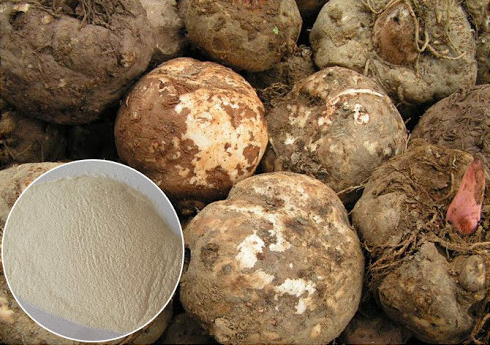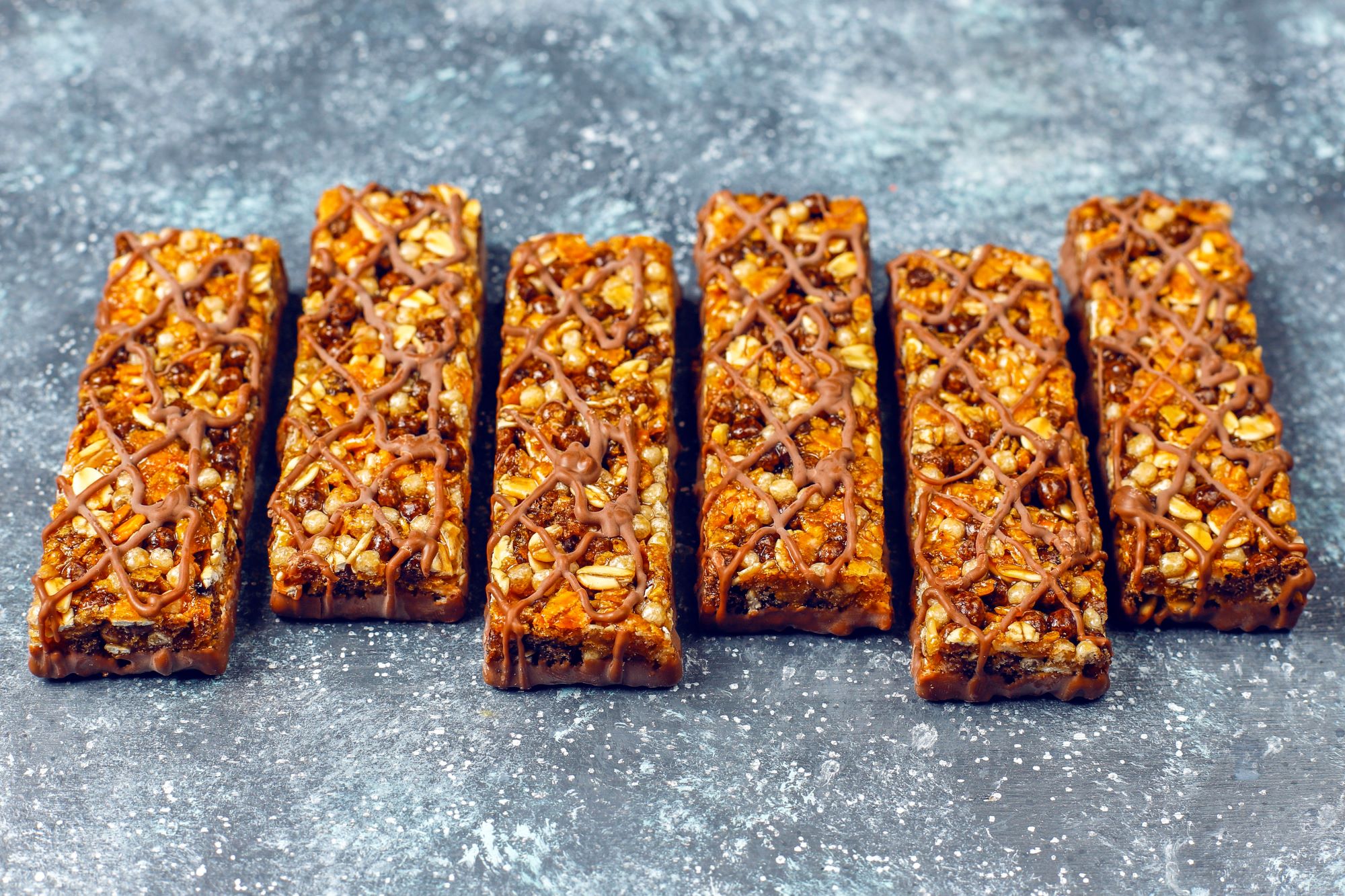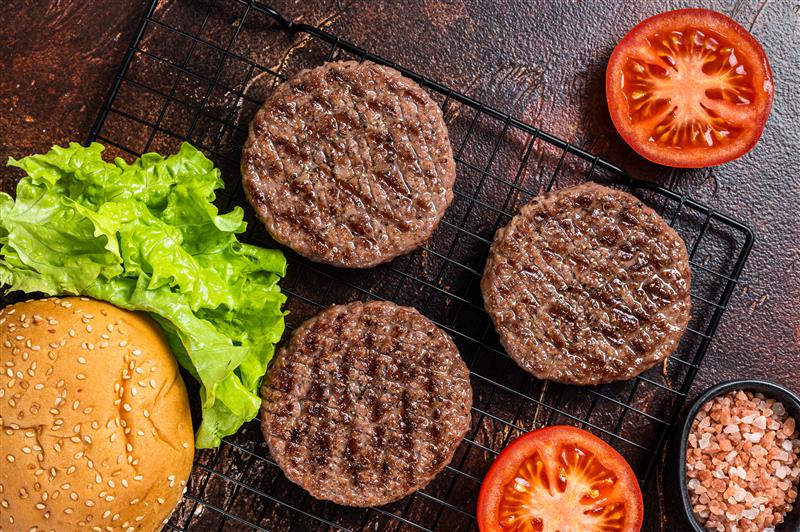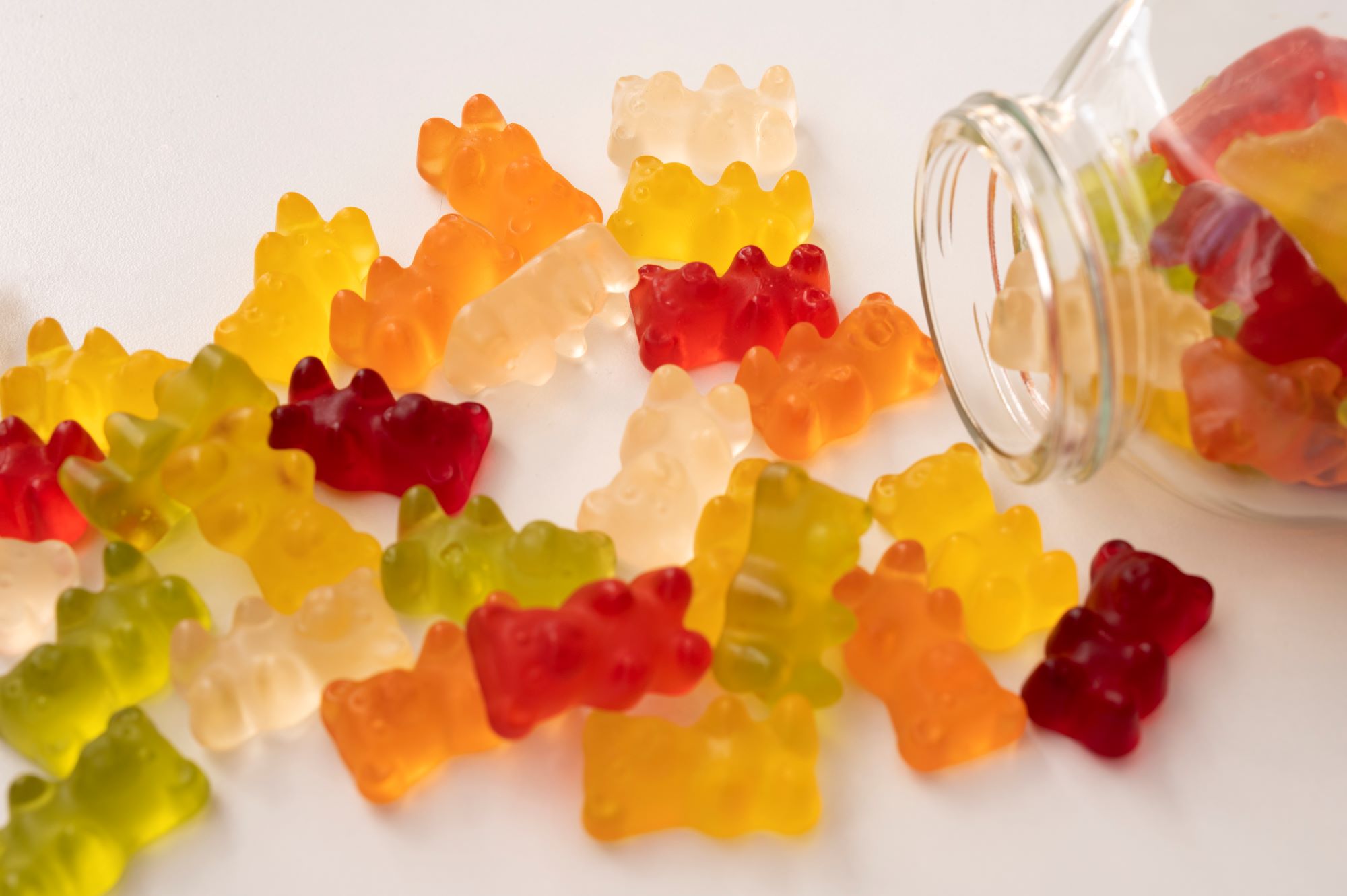Konjac glucomannan (KGM), also known as konjac, conjac, or konnyaku (BeMiller, 2019), is extracted from the tubers of Amorphophallus konjac K. Koch, which is also known as the elephant foot yam. The tubers are harvested after 2-3 years when the glucomannan content has reached up to 30-50% (Pegg, 2012).
Konjac flour is used to make Konnyaku, a traditional Japanese jelly which has a light taste and elastic texture (Sharma et al., 2016). The component that gives konjac jelly their viscous attributes is called glucomannan gum (Williams, 2012).
KGM chain has short side branches and acetyl groups that are randomly present (approx. every 9-19 residues) (Pegg, 2012). Deacetylation occurs with alkali treatment, creating a chewy, irreversible gel (Nussinovitch & Hirashima, 2014). Additionally, thermal reversible gels can be formed when it interacts with other polysaccharides such as xanthan, carrageenan and agar. The addition of sugar enhances the strength of the synergistic gel, while salt inhibits the formation of the synergistic gel. These properties can be manipulated to control the gel-forming capacity in food (Cui et al., 2013).
Konjac has been used as food and food additives in China and Japan for more than 1000 years and it has been introduced in many Asian and European countries over the few decades (Behera & Ray, 2016). As food, this natural ingredient has been applied in Shirataki noodles, a traditional Japanese food. The noodles are made by heating glucomannan solution with limewater to form a thermally stable gel, which is then cut into thin strips and used as a meal component (Pegg, 2012). The noodles made from konjac fibre are thin, translucent and gelatinous (Kemp & Daly, 2016). Besides the noodles, konjac gum is used in conjunction with carrageenan in dessert jellies and aspics to give the desired firm but elastic texture (Pegg, 2012).
As a food additive, KGM acts as an emulsifier, thickener, meat binder and also gelation enhancer in numerous food-related applications. Some examples of gelation enhancement includes low quality surimi (Iglesias-Otero et al., 2010; Liu et al., 2013a), egg white gel (Liu et al., 2013b), as fat replacement in meat products (Ruiz-Capillas et al., 2012; Jiménez-Colmenero et al., 2013) and mayonnaise (Li et al., 2014). As these KGM-based products contain very few calories, they are regarded as weight-control foods (Marcano et al., 2015).
Want to know more about the health benefits of Konnyaku? Click on the link: https://dpointernational.com/question/kindly-provide-info-studies-about-health-benefits-of-konjac/
This article is made possible with the support from our valuable partner Yizhi Konjac.
Sourcing for Konjac gum? Get connected with DPO International at [email protected] or [email protected] and our knowledgeable sales representatives will contact you.
References
Behera, S., & Ray, R. (2016). Nutritional and potential health benefits of konjac glucomannan, a promising polysaccharide of elephant foot yam,Amorphophallus konjacK. Koch: A review. Food Reviews International, 33(1), 22-43. https://doi.org/10.1080/87559129.2015.1137310
BeMiller, J. (2019). Inulin and Konjac Glucomannan. Carbohydrate Chemistry For Food Scientists, 253-259. https://doi.org/10.1016/b978-0-12-812069-9.00010-8
Cui, S., Wu, Y., & Ding, H. (2013). The range of dietary fibre ingredients and a comparison of their technical functionality. Fibre-Rich And Wholegrain Foods, 96-119. https://doi.org/10.1533/9780857095787.1.96
Iglesias-Otero, M., Borderías, J., & Tovar, C. (2010). Use of Konjac glucomannan as additive to reinforce the gels from low-quality squid surimi. Journal Of Food Engineering, 101(3), 281-288. https://doi.org/10.1016/j.jfoodeng.2010.07.009
Jiménez-Colmenero, F., Triki, M., Herrero, A., Rodríguez-Salas, L., & Ruiz-Capillas, C. (2013). Healthy oil combination stabilized in a konjac matrix as pork fat replacement in low-fat, PUFA-enriched, dry fermented sausages. LWT – Food Science And Technology, 51(1), 158-163. https://doi.org/10.1016/j.lwt.2012.10.016
Kemp, D., & Daly, P. (2016). The Ketogenic Kitchen: Low carb. High fat. Extraordinary health (p. 407). Dublin: Gill Books.
Li, J., Wang, Y., Jin, W., Zhou, B., & Li, B. (2014). Application of micronized konjac gel for fat analogue in mayonnaise. Food Hydrocolloids, 35, 375-382. https://doi.org/10.1016/j.foodhyd.2013.06.010
Liu, J., Wang, X., & Ding, Y. (2013a). Optimization of adding konjac glucomannan to improve gel properties of low-quality surimi. Carbohydrate Polymers, 92(1), 484-489. https://doi.org/10.1016/j.carbpol.2012.08.096
Liu, J., Zhu, K., Ye, T., Wan, S., Wang, Y., & Wang, D. et al. (2013b). Influence of konjac glucomannan on gelling properties and water state in egg white protein gel. Food Research International, 51(2), 437-443. https://doi.org/10.1016/j.foodres.2013.01.002
Marcano, J., Hernando, I., & Fiszman, S. (2015). In vitro measurements of intragastric rheological properties and their relationships with the potential satiating capacity of cheese pies with konjac glucomannan. Food Hydrocolloids, 51, 16-22. https://doi.org/10.1016/j.foodhyd.2015.04.028
Nussinovitch, A., & Hirashima, M. (2014). Cooking Innovations: Using Hydrocolloids for Thickening, Gelling, and Emulsification. Boca Raton: Taylor & Francis/CRC Press.
Pegg, A. (2012). The application of natural hydrocolloids to foods and beverages. Natural Food Additives, Ingredients And Flavourings, 175-196. https://doi.org/10.1533/9780857095725.1.175
Ruiz-Capillas, C., Triki, M., Herrero, A., Rodriguez-Salas, L., & Jiménez-Colmenero, F. (2012). Konjac gel as pork backfat replacer in dry fermented sausages: Processing and quality characteristics. Meat Science, 92(2), 144-150.
Sharma, H., Njintang, N., Singhal, R., & Kaushal, P. (2016). Tropical Roots and Tubers: Production, Processing and Technology (p. 595). Chichester: John Wiley & Sons.
Williams, C. (2012). Medicinal Plants in Australia Volume 3: Plants, Potions and Poisons (pp. 179-180). Dural, N.S.W.: Rosenberg.







